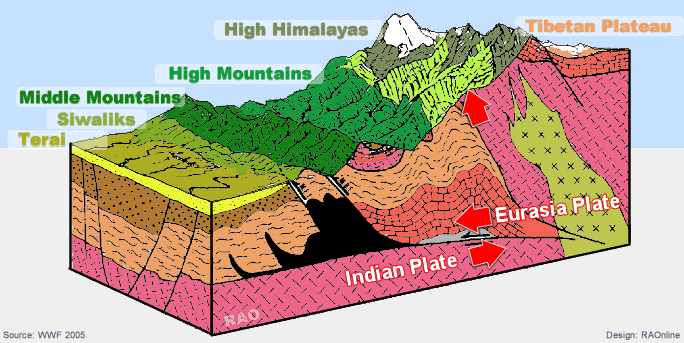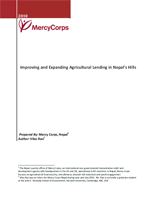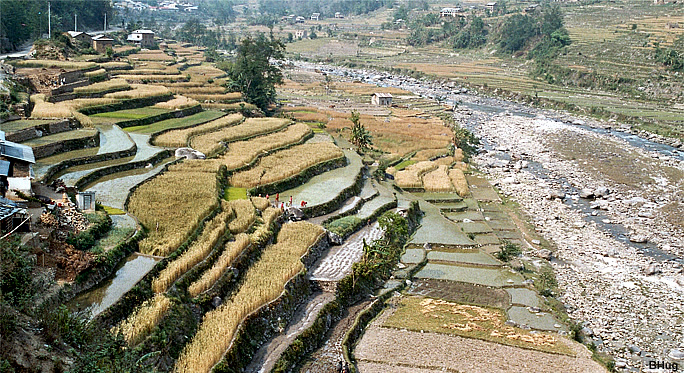|
Development
in Nepal - Reports on Agriculture
|
 |
Nepal Development |
|
 |
Nepal Development |
|
|
 |
|
Improving and Expanding Agricultural Lending in Nepal's Hills
|
Nepal continues to rank among the world's least developed countries and as a low income food deficit country. As of 2009, its income per capita ranked 148th out of 164 countries in purchasing power parity terms, just above Haiti.
 |
|
Facing a difficult geography, recovering from conflict, and struggling with a frozen political establishment, Nepal confronts an array of challenges and significant uncertainty in its development path.
Despite the fact that nearly 80% of Nepal's is dependent on agriculture, agricultural share of GDP is just 40%, due to the subsistence nature of farming. Malnutrition in Nepal, by some measures, is among the worst in the world. Agricultural development to a commercial-based, high-productivity sector will play a critical role to Nepal's future growth.
|
|
Within the agriculture sector, there is a sharp disparity between the Terai and country's hill where approximately 45% of the country's. The mountainous geography makes the land less productive, landholdings smaller, markets harder to access, and illiteracy and subsistence practices common. Due to these challenges, financial institutions – necessary for agricultural input purchase, enterprise development and consumption smoothing – concentrate in the Terai and forego the hills. (The ten-year conflict also drove commercial banks and government support out of the interior). In the hills, only 11% of the population is thought to have access to formal savings, loans, and other financial products to better secure and promote their livelihoods, compared to an estimated 90% in the Terai.

|
This study aims to evaluate modalities of improving and expanding credit access in Nepal's hills. It has four parts. Part 1 will describe the current needs and behavior of farmers in Nepal's hills.and how well suited the financial service landscape is for them. Part 2 will describe and evaluate recent innovations in financial service provision in the hills. Part 3 will consider two new models for agricultural lending to the hills – wholesale lending to cooperatives by microfinance institutions and umbrella lending and capacity building firms. Part 4 will make recommendations and suggest areas for further exploration.
This study is based on 40 interviews with microfinance institution clients, client groups, branch managers, and chief executives, cooperative leaders and members, central bank officials, NGOs and development agencies, and other stakeholders. Interviews were conducted in Kathmandu and in Bhojpur, Dhankuta, Ilam, and Palpa districts, which have similar agro-climatic conditions and crop selection. A complete list of interviewees is found in the Appendix.
Just as there are dramatic disparities between agriculture in the Terai and Hills, so there are dramatic differences among low-, mid-, and high-hills and across the country from east to west.
Bhojpur, Dhankuta, Palpa, and Ilam were judged to respectively have low, medium-low, medium, and medium-high access to financial services, respectively, and with the exception of Bhojpur have higher-than-average market and road access. These districts cannot capture all the geographic variation critical to explaining financial service provision, and the author has kept this in mind regarding his recommendations.
top
|
Report
|
 |
top
|
Links
|
 |
 |
 |
External
link |
|








